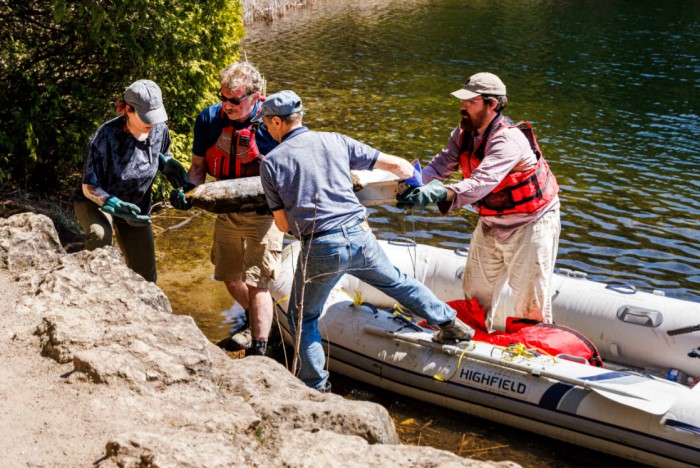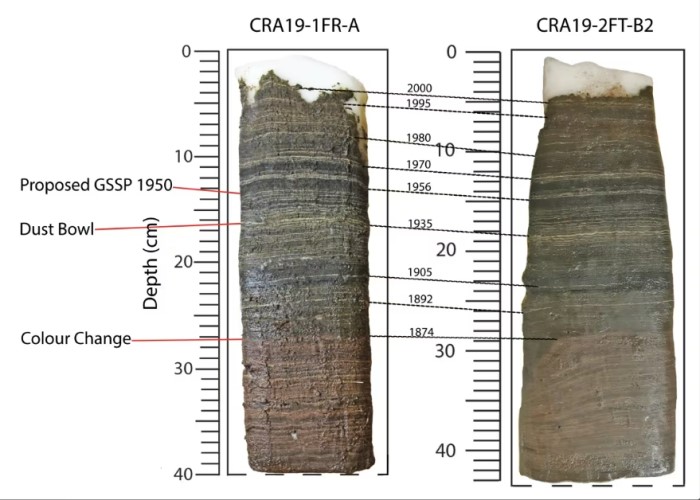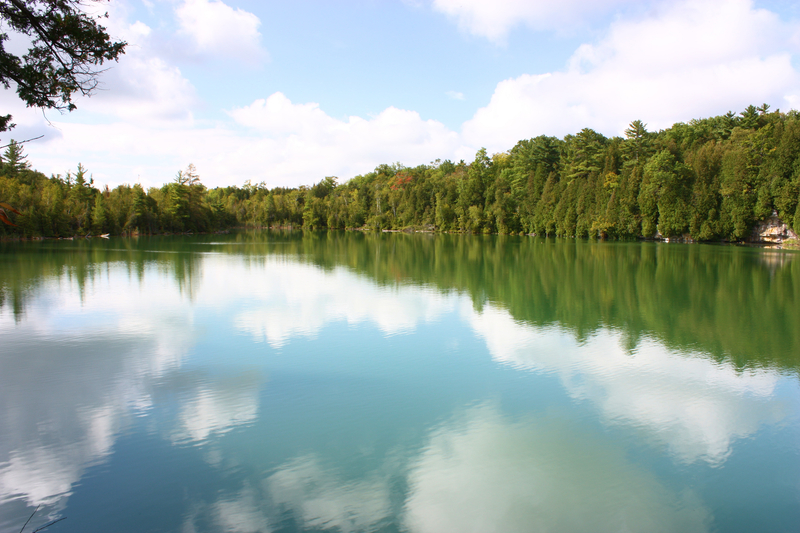A small lake west of Toronto, Ontario has been given international recognition.
It has been chosen to mark the start of a new era!
Crawford Lake has a set of unique characteristics that scientists are looking for to record a moment in history. That is why it was recently chosen as a geological 'golden spike'. It is the spot on Earth being used to mark the beginning of a new section of history called the Anthropocene.
This is the moment in history that we are living in now!
What are periods and epochs?

The Cretaceous Period ended 66 million years ago. This is when an asteroid hit Earth, causing the extinction of the dinosaurs. (Wikimedia Commons)
When you look through Earth's history—especially deep into its history—you will see different sections of time. The largest ones are called periods. They last tens of millions of years.
If you're a dinosaur fan, then you likely already know a few of these periods, like the Cretaceous and the Jurassic. Currently, we're living in the Quaternary Period. It started about 2.5 million years ago.
In addition, these periods are broken up into smaller sections called epochs. These can last anywhere from 20 million years to only 10,000 years. But epochs are there to show distinct moments in time where something big about the planet changed, like the climate, or dominant species of life.
For example, the Holocene epoch began 11,700 years ago. That is when the last major Ice Age ended.
What is the Anthropocene?
The Anthropocene is a new epoch that many scientists have suggested we use. It is said to have begun 73 years ago, in 1950.
The reason for this choice is because since this moment in time, the planet has been undergoing major changes. Changes caused by humans. ('Anthropo-' means 'human'.)
The Anthropocene is not yet an official epoch. Some scientists disagree that the planet has changed enough for us to begin calling this a new epoch. They feel we are still living in the Holocene. But as climate change and mass extinctions continue to increase, support for the Anthropocene is also growing.
Why Crawford Lake?

Researchers from Brock University unload a core sample from the bottom of Crawford Lake. (Brock University)
Crawford Lake is quite small. It is less than half the size of a major sports stadium like Rogers Centre in Toronto.
But it is very deep for its size. And its waters are meromictic. This means that the top and bottom layers of water in it do not mix. This is quite rare for lakes. It preserves the sediment at the bottom of the lake, like a frozen moment in time.
This feature is why scientists are so interested in it.
Layer by layer

Two core samples from the bottom of Crawford Lake. The moment the Anthropocene begins, 1950, is marked. (Krysten Serack-Lafond)
Though rocks form very slowly, new ones are always being made. What is today's soil, mud, and sand will eventually get buried, placed under massive pressure, and turned into rock.
When animal and plants remains are trapped by this process, we get fossils! And each new layer of rock contains a record of what the planet was like when it was formed.
To show moments in Earth's history, geologists use something called core samples. They drill into rock and pull out a tube of it. Then they 'read' the layers of the rock like rings on a tree. Depending on how old the rock is, these layers can tell stories dating back tens, hundreds, even thousands of millions of years ago!
The perfect core sample
In the case of Crawford Lake, core samples from its bottom perfectly show the moment when certain scientists believe the Anthropocene began.
It was picked from a list of 12 candidates around the world as the best example of before and after the Anthropocene. Neat!
Of course, not all scientists agree on this change yet. But whether or not you believe we're truly in a new moment in time, it is exciting to think that history is being marked in a quiet lake in the middle of the Ontario countryside.
Examples of the past are all around us!
 This lake is small, but its history runs deep! (ID
15881068
© Ian Whitworth
|
Dreamstime.com
)
This lake is small, but its history runs deep! (ID
15881068
© Ian Whitworth
|
Dreamstime.com
)









